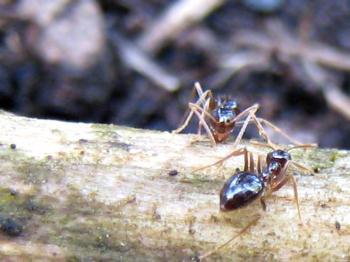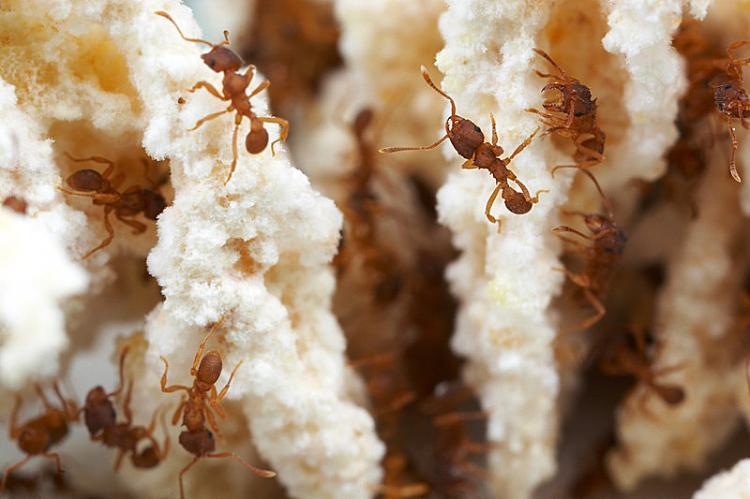A widespread fungus-gardening ant is the only ant species around the globe known to have females reproducing without males entirely, according to a team of researchers in Texas and Brazil.
Although most female social insects, such as wasps, ants, and bees, spend their daily lives without males, the egg-laying queen is always fertilized by the males, producing a crop of baby males that will go forth to fertilize new queens.
Yet queens of the ant species Mycocepurus smithii reproduce without fertilization, and no males seem to be anywhere in the colonies, reported Christian Rabeling, Ulrich Mueller, and their Brazilian colleagues in the journal PLoS ONE recently.
“Animals that are completely asexual are relatively rare, which makes this is a very interesting ant,” said Rabeling, a graduate student at the University of Texas at Austin, in a press release.
“Asexual species don’t mix their genes through recombination, so you expect harmful mutations to accumulate over time and for the species to go extinct more quickly than others.”
M. smithii lives across Northern Mexico through Central America to Brazil, including some Caribbean islands.
The discovery was inspired by previous studies of the ants from Puerto Rico and Panama. One study by Mueller and former graduate student Anna Himler showed that the ants reproduced in the lab without males.
Rabeling dissected reproducing M. smithii queens from Brazil and found that their sperm storage organs were empty.
Nevertheless, scientists believed that some specimens of male ants previously collected in Brazil in the 1960s could have been males of M. smithii. If males of the species existed, it would suggest that—at least from time to time—the ants reproduce sexually.
Rabeling analyzed the males in question and discovered that they belonged to another closely related and sexually reproducing species of fungus farmer known as Mycocepurus obsoletus, thus establishing that no males are known to exist for M. smithii.
To read the research paper, please visit http://www.ncbi.nlm.nih.gov/pmc/articles/PMC2728836/
Although most female social insects, such as wasps, ants, and bees, spend their daily lives without males, the egg-laying queen is always fertilized by the males, producing a crop of baby males that will go forth to fertilize new queens.
Yet queens of the ant species Mycocepurus smithii reproduce without fertilization, and no males seem to be anywhere in the colonies, reported Christian Rabeling, Ulrich Mueller, and their Brazilian colleagues in the journal PLoS ONE recently.
“Animals that are completely asexual are relatively rare, which makes this is a very interesting ant,” said Rabeling, a graduate student at the University of Texas at Austin, in a press release.
“Asexual species don’t mix their genes through recombination, so you expect harmful mutations to accumulate over time and for the species to go extinct more quickly than others.”
M. smithii lives across Northern Mexico through Central America to Brazil, including some Caribbean islands.
The discovery was inspired by previous studies of the ants from Puerto Rico and Panama. One study by Mueller and former graduate student Anna Himler showed that the ants reproduced in the lab without males.
Rabeling dissected reproducing M. smithii queens from Brazil and found that their sperm storage organs were empty.
Nevertheless, scientists believed that some specimens of male ants previously collected in Brazil in the 1960s could have been males of M. smithii. If males of the species existed, it would suggest that—at least from time to time—the ants reproduce sexually.
Rabeling analyzed the males in question and discovered that they belonged to another closely related and sexually reproducing species of fungus farmer known as Mycocepurus obsoletus, thus establishing that no males are known to exist for M. smithii.
To read the research paper, please visit http://www.ncbi.nlm.nih.gov/pmc/articles/PMC2728836/







Friends Read Free